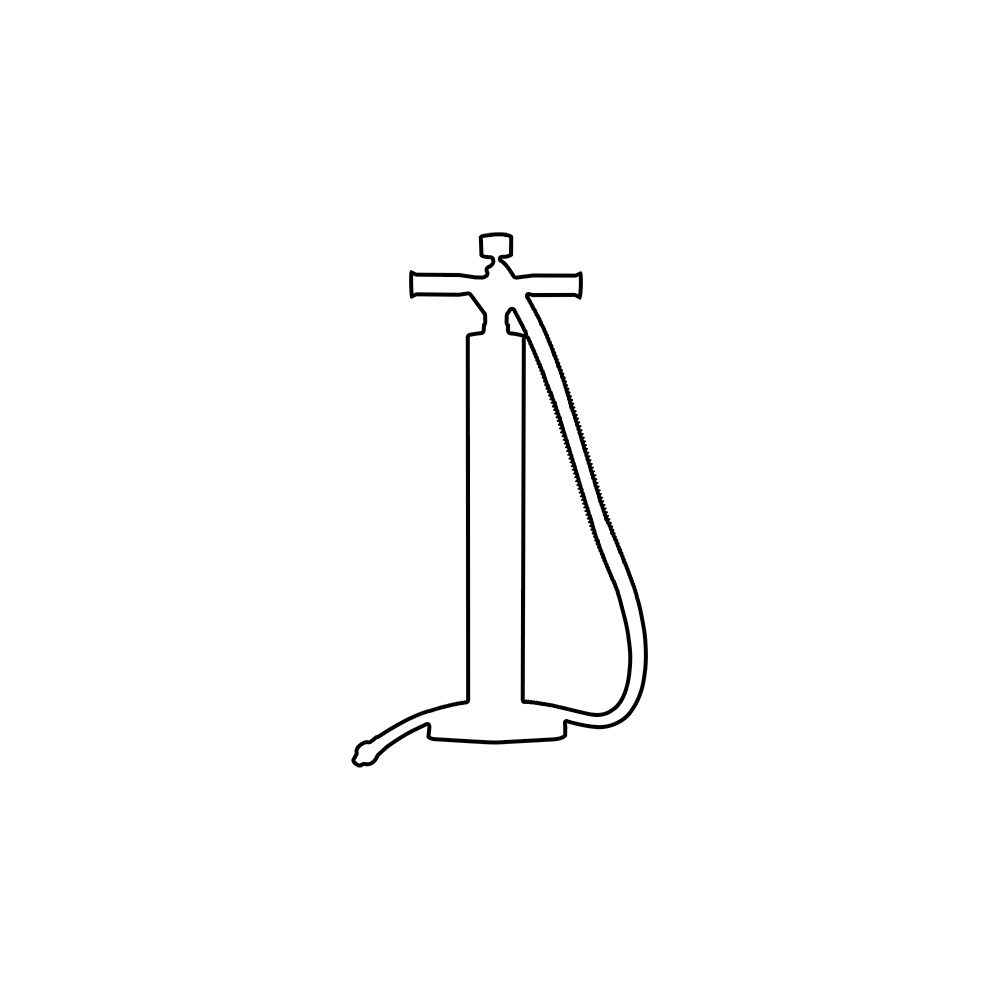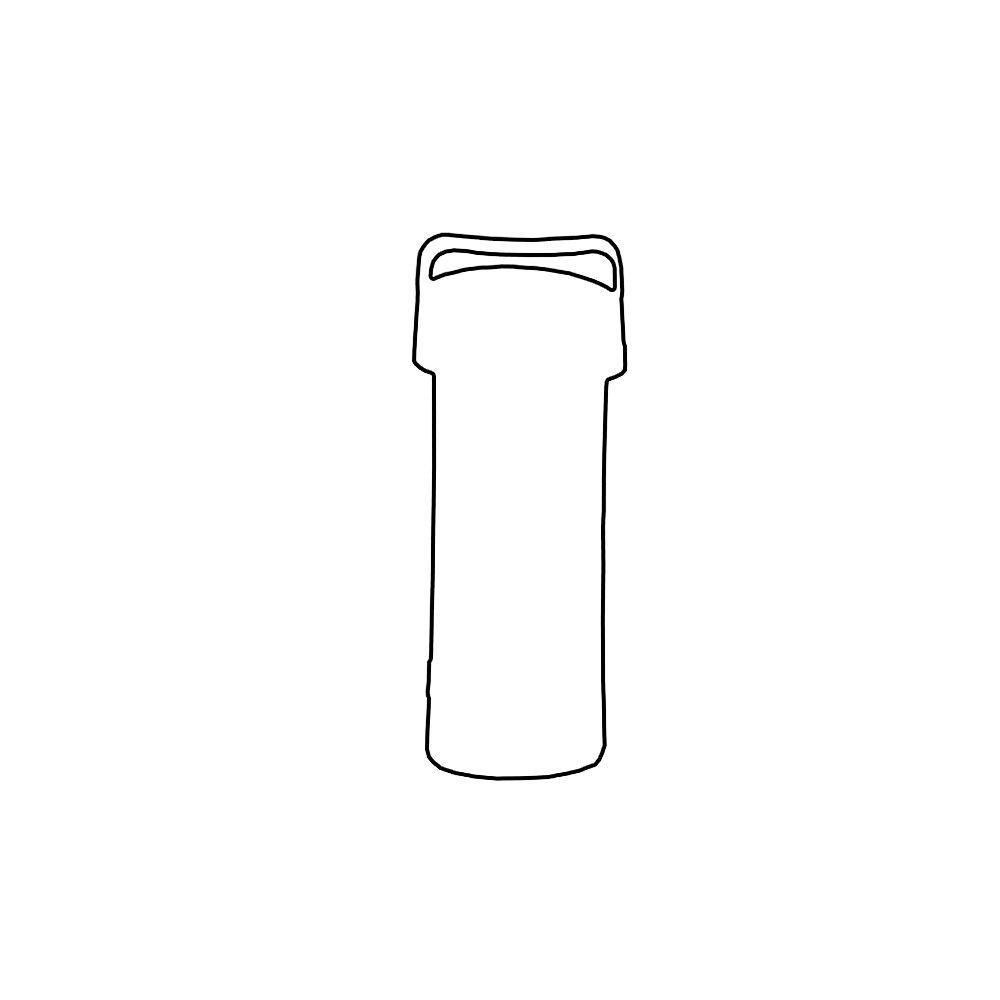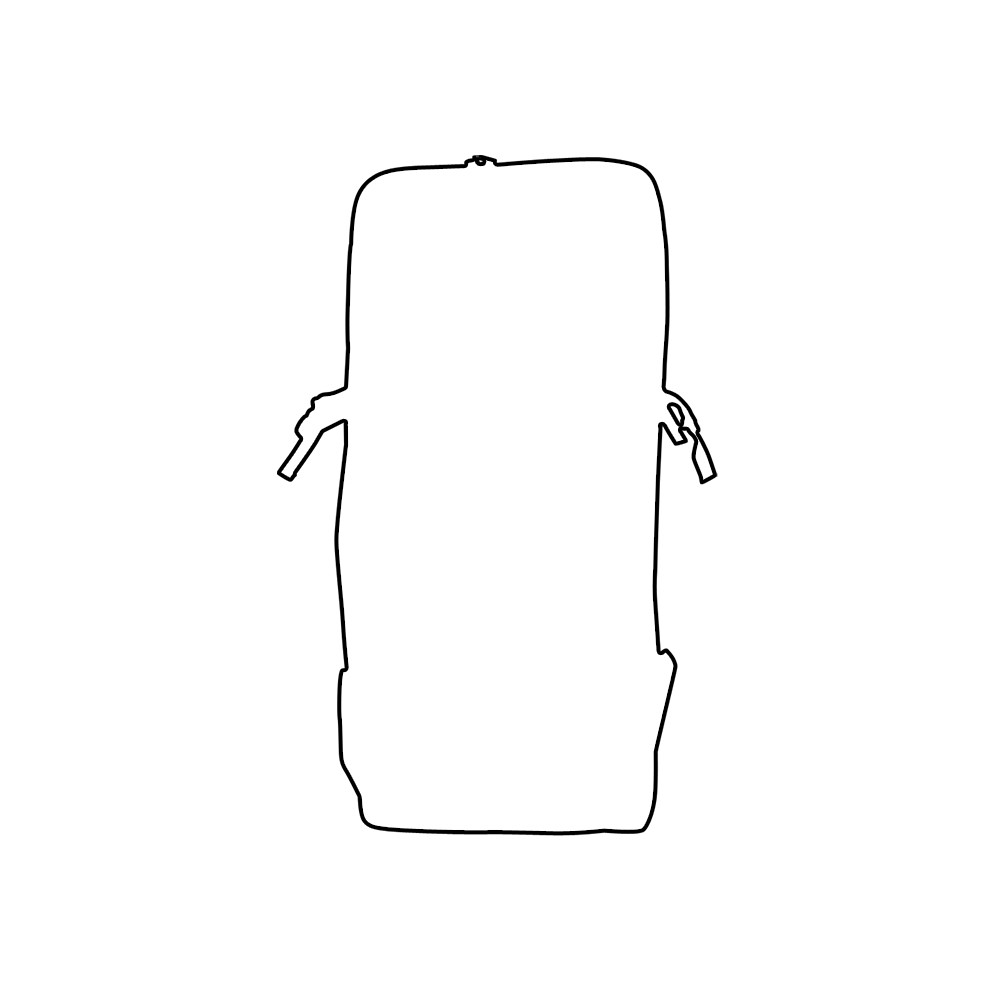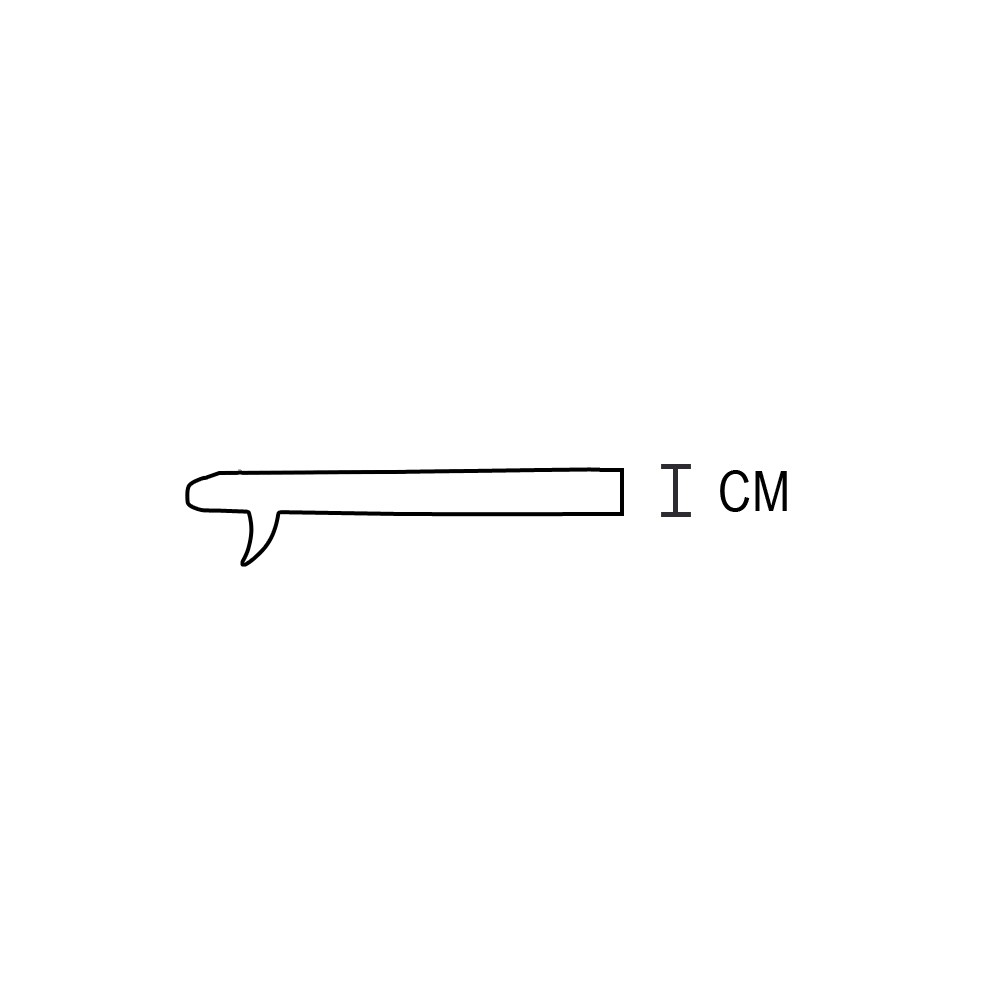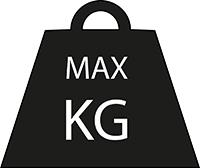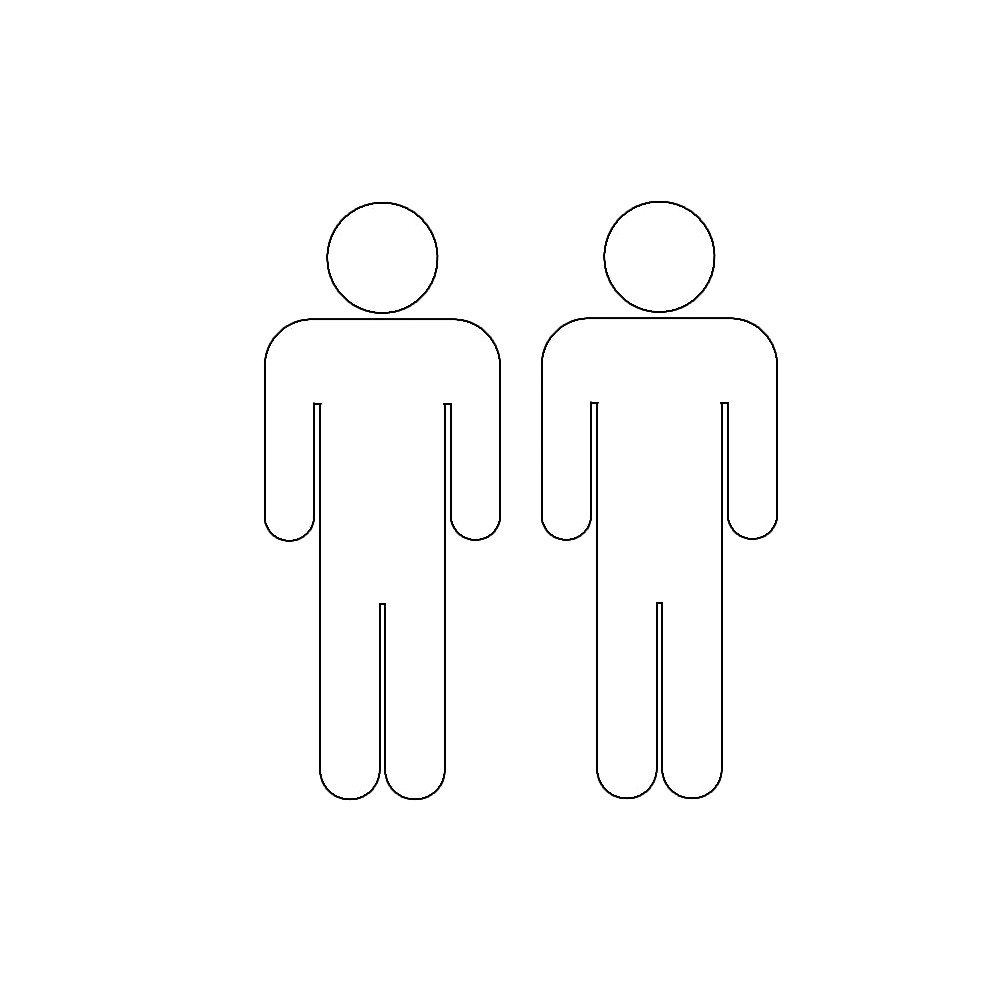Worth knowing about SUP
Paddle:
A paddle can be bought with a fixed length, which is best suited for the more experienced paddle boarders who already have been paddling on their SUP for some time. A paddle can also be bought as an adjustable paddle, which is perfect for people who just want to use their SUP for lovely trips on the water or ordinary play. There exists many types of paddles. The most common ones are the cheap aluminum paddles that usualy are 2 or 3 pieces. Besides aluminum, there are fiberglass and carbon paddles between which a fiberglass paddle is cheaper. The reason for this is that carbon paddles are must lighter and stiffer than both aluminum and fiberglass. The higher procentage of carbon, the lighter and stiffer the paddle. For all of these it goes that the more pieces the paddle is made of, the bigger friction does it cause in the water.Pump:
The trend of today is the inflatable SUP boards, since they are easier to store and take along with you. To better use this type of a SUP board, one needs a pump specialized for inflating an inflatable SUP board. This pump for your SUP board comes with a pressure gauge and hose.Leash:
A quite excellent and great extra thing to have at hand, when you have bought a SUP and would like to get out on the water and paddle onward, is a leash. The leash is clever to have, since you can avoid having your SUP board floating away from you, while out on the water. It is recommended that your leash is the same length that your SUP board is. A SUP leash is especially important in the waves, so your SUP doesn't get caught in the waves and starts drifting. In a windy situation a leash would also be clever, so you won't lose it. There are two types of SUP leashes. One is a long leash that suits Race and Wave paddleboarding best and the other is a kind of twist leash that suits Touring and regular paddleboarding best.Repair kit:
It is always a good idea to look after your SUP board, in order to avoid the board suddenly giving in due to too many hits and alike, which then leads to you being unable to get out and paddle on the water. A reparations kit with various of content inside, you will be able to repair and take care of your SUP, while also having no trouble carrying these things around, should it become necessary.Bag:
Looking after your SUP board is and will always be a very good way to insure a longer longevity. With a bag you will be able to just that even better, and on top of protecting your SUP board, transporting your SUP around will also become easier, each time you want to get out and paddle on the water for a trip.Dimensions:
Dimensions are the total size of your SUP board. SUPs for women are often 10'0-10'6. Men typically have larger sizes most often between 10'6-11'6. However, it also depends on the type of SUP sport you want to exercise. SUPs to be used exclusively for Racing are usually above 12'6, due to the narrow design compared to Allround SUPs. For Wave SUPs, the design is smaller and in most cases around the size dimension 8'0.Length:
The total length of the SUP board. SUP boards comes in many lengths and various shapes. The length has great influence on the volume and stabilty of the board. When choosing a SUP, the length is not one of the most important thing to take note on, due to it typically following the SUP board volume and shape well enough. Both the volume and the shape matter more when looking for a SUP.Width:
The total width of the SUP board. SUP boards come in a lot of different widths and shapes. When looking for a SUP board the width are not as important to think about or concern oneself with too much. Simply, because the width pretty much goes hand in ahnd with the volume and shape of SUP board. Both of which are a lot more important to have in mind when choosing a SUP.Thickness:
The total thickness measured of the SUP board. There are typically not huge differences in thickness when it comes to the thickness of SUP boards. The thicker SUP boards often weights more, which will result in it being harder to achieve the same speeds as fast as a SUP board that have a lesser thickness. Think SUP boards have greater volume which gives you better balance.Weight:
The total weight of the SUP board. Various sizes of SUP boards will of course not weigh the same. Depending on what your SUP board will be used for the weight will play a part in your ability to perform. If you are going out into the waves, the weight will matter alot, where if you are just going for a cozy trip the weight will be less important. Inflatable SUP boards come in either single layer or double layer. Double layer SUP boards are alot heavier than single layer ones. They are also stiffer which makes them alot better on the water.Volume:
The volume of the SUP board. The volume is a very important factor when choosing a SUP board. The reason for this is that the volume is an indicator of how much buoyancy a SUP has got. If you are a paddle boarder on the heavier side you will need a SUP board with more buoyancy. Vice versa goes the same for those on the lighter side of paddle boarders. SUP boards with a high volume are less maneuverable, therefore it is very important to choose the right SUP with the suitable volume for your weight. However if you are just using your SUP for cruising it is usually a good idea to choose one with a relativly high volume, because it helps the stability.Recommended Load:
The recommended maximum load is an expression of what the SUP Board can handle without compromising performance. We are a team of professional surfers, in fact, we have a world champion among us. We have tested our SUP board and can therefore provide our clients with the best guidance. Recommended weight is our assessment of which kg you can use the SUP board on and off. Often, a board can handle more weight than we recommend, as our recommendation is that you get the best possible experience on your SUP board. It is also recommended to buy a SUP that is too big and can handle very much if you want to use it for cruising or touring, as you will therefore have increased stability.Max load:
Max load is an expression of safety. In order for a SUP board to be CE approved, a maximum load must be made for what it can handle with 100% security. There are different requirements for maximum load and some brands and parts of the world make higher demands for your safety. For example. can a Vapor SUP of xxx liters not flow more weight than another SUP board of several xxx liters. Most SUP boards can carry more than the approved maximum load, which is why you also talk about the recommended load. One last important detail about the term max load is that although a SUP board can handle 120 kg, does it not mean that the SUP can do its best with that weight, so recommended weight remains important to read about.Rider's level:
It is very important to choose a SUP board that is right for your level. Some boards are intended to be used by highly experienced practitioners, while others are more useful for multiple levels. Your SUP experience will generally improve with a board that fits you perfectly.Flat water:
Flat and windy water without ripples, which you often experience on lakes or in rivers. Sailing on flat water with your SUP is ideal for those who want to relax and enjoy themselves on their SUP board.Waves 0-50 cm:
May be flat, but will usually have ripples ie. small waves / foam waves near crackles or close to the beach. These very gentle waves are the most optimal for anyone who wants to try surfing the waves and experience many hours of fun with SUP surfing.Waves 50-200 cm:
In Denmark, you will typically only experience this type of wave on the West Coast in Jutland on the open sea. It's also mostly for pro surfers who know what they can, want and need on the water. By far the fewest need this when buying their SUP board.Race:
Race is a form of SUP surfing, where there is better momentum and more stability. That's why they're mostly for those who want to see something on their tours, also called Touring, and for those who want to move quickly from A to B. Race SUPs are more pointed and very directionally stable, which means you do not need to change as much between the sides as you paddle.2 People:
This means that it is possible to be 2 people on the SUP as long as the recommended weight limit is not exceeded. A 2 person SUP is smart for parents who would like their child on the water or dog owners who surf with the dog on board.Tracking:
Tracking tells something about how straight your paddleboard moves on the water. Race and Touring boards tend to glide better and faster in a more even manner than paddleboards made for Fitness or Allround. Ligther riders usually have no trouble with the tracking of their SUP, but the heavier riders can solve this problem by replacing the center fin with a rudded fin, or simply adding two side fins.Stability:
Stability in terms of paddleboarding is about how stable a SUP board is and feels. The wider and longer a paddleboard is the more stability it has. However, the width of the SUP offsets the length a bit, so for beginners it's best to just find the proper balance between width and length. Another thing that plays a role in SUPs stability is the buoyancy. For a higher stabilty you want a SUP board that glides nice and high on the water surface, rather than the opposite. A last important factor is the boards construction. All double-layer SUPs have more stability than single-layer ones, because the thickness makes the board stronger and more solid.Maneuverability:
Maneuverability Is measured by how well the board follows your paddling movements and turns on the water. It can be harder to maneuver a very long and heavy board, while the short and light ones easily can change direction.Stiffness:
Stiffness has a direct effect on the overall performance of the SUP board, so it super important to make sure yours is stiff. A SUP that isn’t stiff enough will sink into the water instead of gliding on top of it and will make your experience complicated and less joyful.We usually recommend that you buy a double-layer SUP with a standard pressure somewhere between 15-25PSI. The extra layer provides more stiffness and a better surf feel.Construction:
The construction of a SUP is important because it constitutes the major part of the board’s rigidity. The goal is always to get so set on the rigidity of a hardboard. All boards are constructed of a top and bottom layer of PVC fused with so-called drop stitches (thin nylon threads). Below you can read about the 3 types:A SUP without additional laminations or reinforcements to the dropstitch construction, is referred to as a Single skin. This is the most simple and flexible construction, which is also very transportable due to its low weight.
If the dropstitches are reinforced with an adhesive surface on which PVC layers can be laminated, a lightweight construction is obtained which is stiffer than single skin constructions. This is a fusion design called Light Weight (LW). The FUSION design is also, by some manufacturers, called MSL or FLT. A board with such a design is a medium to high performance SUP that lies between single and double skins in terms of stiffness and weight.
If you use the single skin construction as the core and laminate another layer of PVC on the top and bottom, you have a significantly stiffer construction called Double Skins. This is for pro performance boards, which come closest to the rigidity of hardboards! Furthermore, the construction is also more resistant to impact and tear. It requires extra materials and work, which therefore makes it more costly.
Now you understand the construction of the board, and why the top and bottoms are important. You should also pay attention to how the side walls / rails are build. SUP-boards must handle high pressures, be stiff and have stability; therefore, it is important that the manufacturer has constructed the rails with durable materials. Some brands do not inform you about the rails - often because it is a single rail construction. This means that the side walls are made of a thin layer of PVC which does not add to neither the strength nor the stability of the board. Quality boards are constructed with double rail build with a sealing layer that connects the top and bottom. An additional and wider layer is laminated to the sealing layer to add strength, stiffness, and stability. The side walls of a double rail SUP can handle beatings and scratches much better compared to single rail SUPs.
Inflatable Chambers:
There are 2 types of inflatable chambers. A Single Chamber system board, as its name suggests, is a board that consists of one inflatable chamber that makes up the entire board. The advantage of this is that you simply need to pump the board from a valve and that it will have many years of usage compared to a double chamber board with several weak points. Furthermore, the single chamber allows for uniform pressure throughout the board.A board with a Double chamber system, consists of two separate chambers. One outer and one central chamber is glued and sewn together. Initially, the goal was to achieve greater safety if the accident was out and you punctured on the high seas. The reality is that all punctures are leaking and that you will get to shore with a single chamber SUP that leaking air. Later, the technology was marketed for increased rigidity, but there can be doubts as to whether the introduction of more inflatable parts can increase the stiffness, when they will always be flexible and therefore shift in relation to each other. It has been debated whether Double Chamber technology was a bit more of a desktop project than a realistic design.


